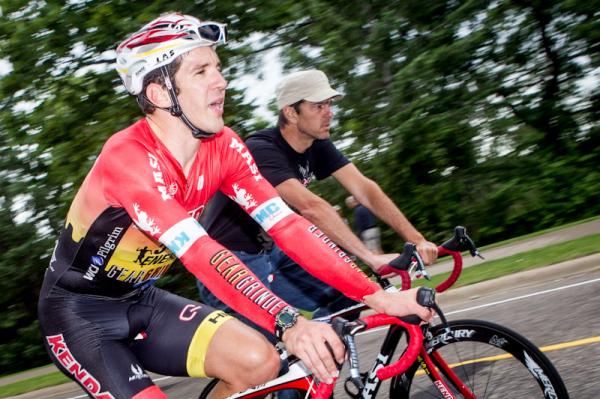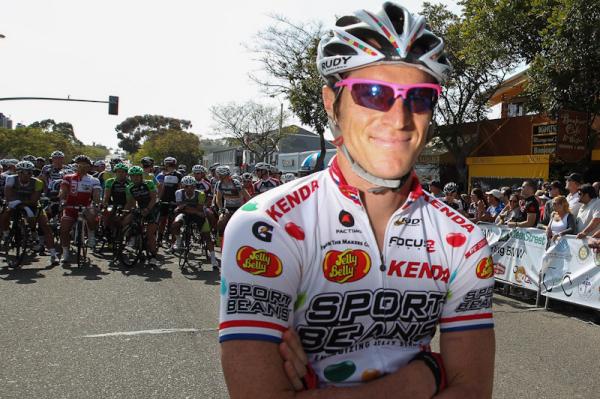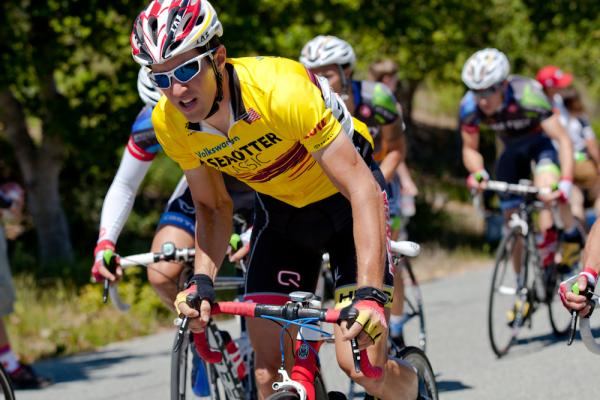Riders react to USADA reasoned decision
US domestic professionals speak out following news



The US Anti Doping Agency's release of its “reasoned decision” in the Lance Armstrong case, coupled with multiple confessional statements from Armstrong's former US Postal teammates, caused consternation, frustration and ambivalence for some of the domestic pros who are contemporaries of the riders involved.
“It's hard to hear this, because we don't want to see our sport in the light for this,” said Brad Huff, a 33-year-old pro who started his career with Jonathan Vaughters' TIAA-CREF team and has ridden for Jelly Belly since 2008. “We want it to be in the spotlight because of amazing things like a family of Olympians, the Phinneys, [who] have this amazing son coming through the ranks, and he's winning world championships and doing it the right way. That's what we want to hear about, but the truth needs to be told.”
Six active former teammates, Levi Leipheimer (Omega Pharma-QuickStep), Christian Vande Velde (Garmin-Sharp), David Zabriskie (Garmin-Sharp), Tom Danielson (Garmin-Sharp), Michael Barry (Sky) and George Hincapie (BMC), admitted their own use of banned substances while implicating Armstrong and others on the US Postal team's staff in affidavits submitted to USADA. All of the riders received six-month bans, although both Hincapie and Barry announced they would retire this season.
Those six riders joined Frankie Andreu, Tyler Hamilton, Floyd Landis, Stephen Swart and Jonathan Vaughters as part of a 26-strong group that gave written testimonies. The evidence also includes financial payments, emails, scientific data and laboratory test results that further prove the use, possession and distribution of performance enhancing drugs by Lance Armstrong and the US Postal team, according to USADA.
Kenda-5-Hour Energy's Andy Jacques-Maynes, a 34-year-old rider who turned pro in 2000, said that despite years of hearing rumors and having his own suspicions, he was still “blown away” by the USADA evidence and subsequent confessions.
“There have always been a lot of rumors,” Jacques-Maynes said. “But to have it all laid out in black and white is pretty eye opening. It's just a big realization. All these people I know, that I've talked with and that I've met and that I've raced against, they were all cheating at some point.”
Adam Myerson, the 40-year-old leader of the SmartStop-Mountain Khakis team and an outspoken anti-doping advocate, said the deal USADA cut that allows the active riders to serve part of their six-month bans during the off-season before they return to competition left him feeling strongly ambivalent.
The latest race content, interviews, features, reviews and expert buying guides, direct to your inbox!
“On one hand I believe in rewarding people for coming forward,” Myerson said. “I think it's reasonable that if someone cooperates, that they do have some reward or incentive to do so. So something less than a two-year ban may be appropriate in that case. We needed this whole crew to come forward in the way that they did if we are gonna move forward in the sport. So I think if this is the deal that was negotiated, I'm happy to see it happen.”
But Myerson said he also knows that many of the riders have benefited greatly from their past transgressions and believes they are paying a relatively light consequence for the damage they did to the sport.
“Some guys are able to retire or serve their suspension over the winter,” he said. “Why are they allowed to stay in the sport? Why can't those spots be taken up by the next generation of guys immediately? But I know we need them to repair the damage, so that's again part of my ambivalence. I want those guys to go away forever, on one hand, but I want them to be forced to essentially pay reparations to the sport on the other. I want them to be forced to stick around and repair the damage that they caused.”
Myerson said one of the ways riders from what may be cycling's dirtiest era can repair that damage is by supporting the next generation of riders and teaching them to do it the right way.
“I have a rider on the Hincapie team – a rider that I coach who is signed with the Hincapie team next year,” he said. “So for me, one of the ways that that damage can be repaid is those dollars from Hincapie being poured back into a team that specifically works with young riders and keeps them on a clean path through the sport. I want to see my rider take advantage of that opportunity. That's payback, in a sense.”
And there is a lot to repay, Meyerson said, because the use of performance enhancing drugs caused more damage than simply tarnishing cycling's image. Leipheimer, for example tested positive for ephedrine at the 1996 Elite criterium championships, which he won after lapping the field, and admitted using EPO while riding for Saturn in 1999. He won the US time trial national championship that year and signed with US Postal for the 2000 season.
“Every one of those guys took up a spot on a team,” Myerson said of the riders who admitted doping. “They took prize money and they got results. Just banning them from the sport or erasing their results from the records doesn't put money back in other people's pockets. Their doping changed people lives. It affected everyone. People missed opportunities that they would have gotten with spots on teams.”
Huff echoed Myerson's feelings of frustration, adding that if other cyclists had given in to the temptation to dope, or if none of them had doped at all, the US would have an entirely different cast of characters at the upper echelon.
“It's frustrating because the individuals who have been implicated here make – not thousands of dollars – but hundreds of thousands of dollars,” Huff said. “And other morally sound cyclists across the board and in the world make hundreds of dollars. That's where the frustrations comes.”
But with the USADA evidence being released and the growing stack of rider confessions, the truth is slowly coming out and riders who were at the top of the heap may see their stock fall as fans realize how they got there. Now it's time to focus on the future and helping the next generation of US stars to get it right. And Myerson seems hopeful.
“I think we're actually on track right now,” Myerson said. “With teams like Garmin and FDJ, which as a reputation for being a clean team, and there are plenty of other teams that have already made the commitment. So I think we just need to stay on that track.”
Huff also said he sees signs that have engendered optimism for the future, but he also believes it's not going to be easy to move forward.
“We all want a better career path,” Huff said. “We want to be able to see great new riders like Alex Howes and Jacob Rathe, who are doing it clean and have their entire lives. We want to see that. So it's going to take some huge steps from the top down. And Jonathan Vaughters, even though he's implicated in this, he's doing his best to move forward at the disgruntlement of other heads of state.”
But Jacques-Maynes may have best summed up the path to a clean future for cycling by appealing directly to the next generation and asking them to resist the pressure and temptations to find shortcuts to success.
“If there's some doping scandal with this new crop of guys, who are amazing, that would absolutely kill [US cycling],” Jacques-Maynes said. “Right now it's teetering on the edge, so they have to realize their responsibility is even greater to do it the right way. And that's my message to them: Please do it right, because the whole sport of cycling in the US is in their hands right now.”
Growing up in Missoula, Montana, Pat competed in his first bike race in 1985 at Flathead Lake. He studied English and journalism at the University of Oregon and has covered North American cycling extensively since 2009, as well as racing and teams in Europe and South America. Pat currently lives in the US outside of Portland, Oregon, with his imaginary dog Rusty.
